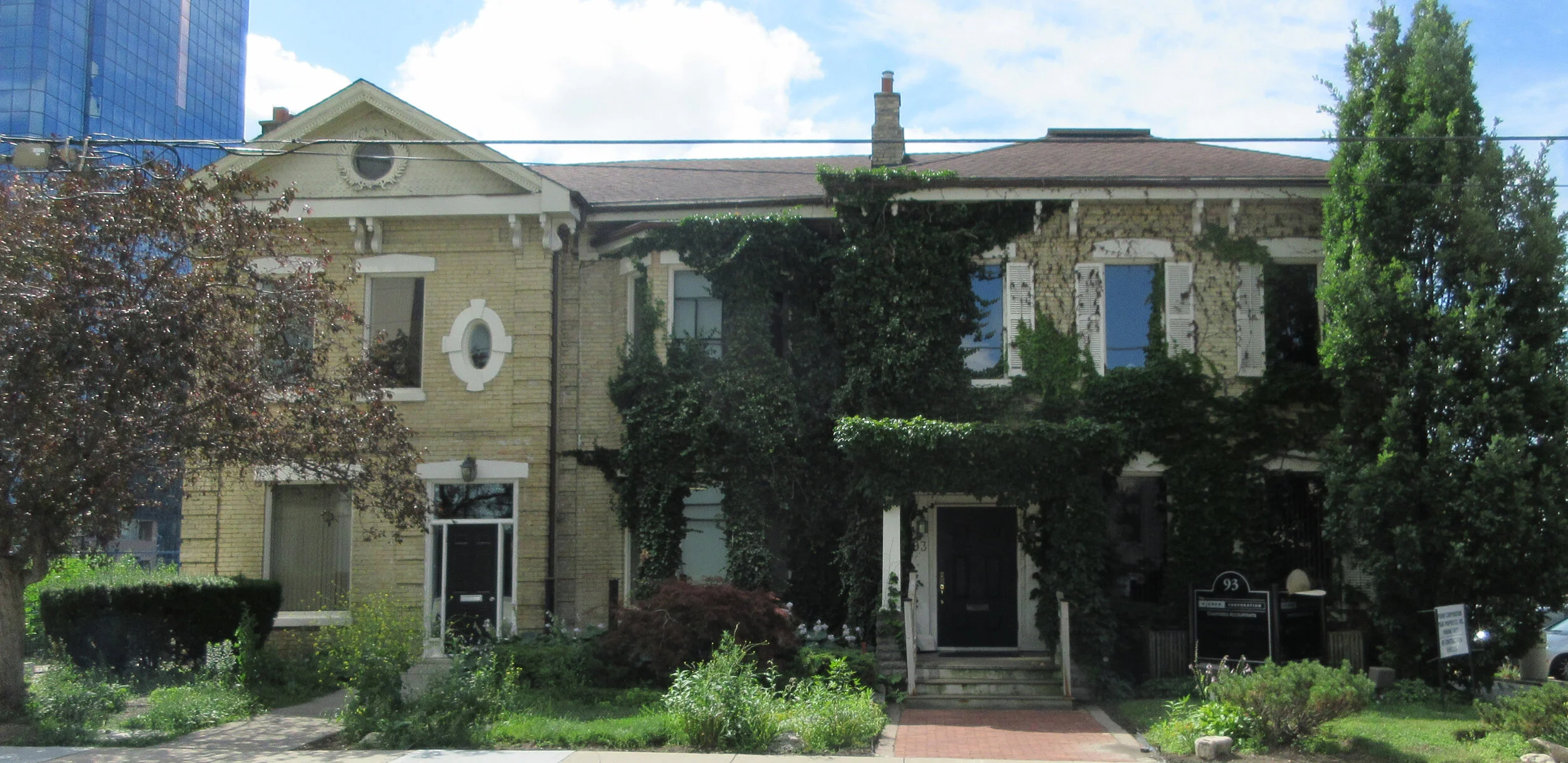93-95 Dufferin Avenue
93-95 Dufferin Avenue
Description:
The double house at 93-95 Dufferin Avenue represents a time when London’s influential people lived in the prestigious neighbourhood extending north and east from the great Courthouse at the forks of the Thames. It is among the precious few buildings that remain in the Talbot Street area from the second half of the 19th Century. A twice designated property, it is now threatened with demolition.
The house was built in two phases, the first in 1864 as the home of Samuel Peters (and possibly designed by him) and the second, to the east, built decades later in 1894. Both have Italianate features such as paired wooden eave brackets, a shallow hipped roof and balanced proportions in the windows and doors. The later house shows as well a strong Classical Revival influence with its temple front form and keystone blocks above the entry doorway. A double-story bay window acts as a bridge between the two houses.
Following Peters’ death, the double house was occupied by Colonel John Walker, a Scottish-born industrialist and Member of Parliament for London in 1874. He was also a vice-president of Canadian Pacific Railway, a director of the Mutual Oil Refining Company and Middlesex County Registrar. He was married to Laura Hespeler, heiress of the wealthy Jacob Hespeler of Waterloo County.
Threats:
This house is on the same building lot where the better known and deeply mourned Camden Terrace along Talbot Street was turned into rubble. Today, a different developer plans a similar fate for 93-95 Dufferin Avenue. This building is ‘on the brink’ because it is part of a high-rise development with intent to demolish rather than give it a viable contemporary use.
Recommendations:
The building should be saved and repurposed. It could become headquarters for a business or professional firm or be converted into luxury apartments. Each year more historic buildings are lost to visual memory from this downtown area that was seminal to London’s early history. Plaques and memorials offered in lieu of demolition do not replace the reality and felt presence of a bricks and mortar landmark.

